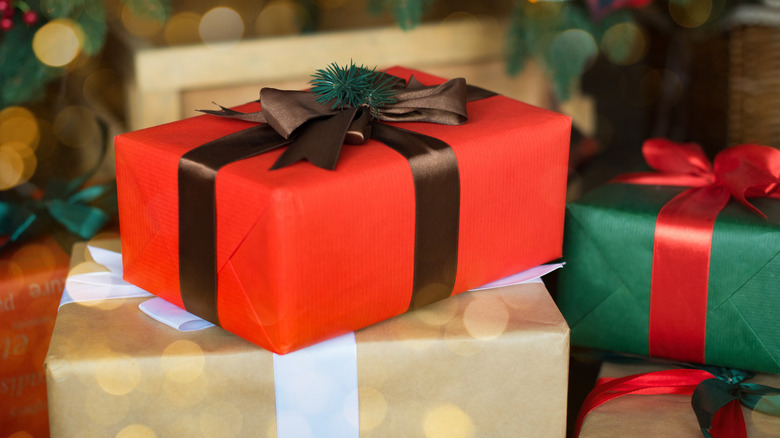Here's Why Red And Green Are The Colors Of Christmas
No one can remember a time when red and green were not the colors that symbolize Christmas because, well, that's the way it's always been. Sure, we have every imaginable color of ugly Christmas sweaters, and houses lined with multicolor lights. But if you asked nearly anybody about Christmas colors, they'd undoubtedly say "green and red." They might point to the color of the Christmas tree or Santa's red suit. But how did those two colors become so synonymous with the holiday? And who made that decision?
The answers to these questions are centuries in the making and, in the beginning, had nothing to do with Christmas at all. Celebrations with the colors red and green were originally linked to a different holiday: the winter solstice. "[O]ne can trace the roots of this color coding back through the centuries, to a time when the colors themselves had symbolic meaning, possibly as a way of accentuating a significant division or a boundary," Spike Bucklow, an art historian from the University of Cambridge's Hamilton Kerr Institute, told Reader's Digest. For the Celtic people, green holly plants with their red berries symbolized beauty and good fortune in the winter months. Decorating a home with holly was meant to summon a prosperous new year, per Country Living. From generation to generation, the Celtic custom of putting up red and green holly became a tradition that extended to other decorations with the same two colors.
Red and green become a Christmas commercial hit
As Mental Floss pointed out, there are other traditions incorporated into Christmas celebrations that could explain why red and green are front and center, including their prominence in medieval churches. But in the Victorian era, Christmas colors expanded to white, blue, and dark red, as well as metallic shades like gold, bronze and silver, per Antique HQ. In the decades that followed, red and green were still prominent, but Christmas was decidedly a multicolor extravaganza until the 20th century.
However, the modern use of red and green at Christmas that solidified the pair as the holiday colors may have less to do with history or tradition as it does (you guessed it!) with the commercialization of Christmas. In 1931, Coca-Cola hired Haddon Sundblom to create an advertising campaign featuring a fat, jolly Santa Claus. "[T]he fact that all these things came together — this friendly, fat Santa in these bright red robes, which, I don't think is a coincidence, match the color of the Coke logo — this really took hold in American culture," Arielle Eckstut, co-author of "Secret Language of Color," told NPR. "It solidified in our collective imaginations the red of Santa's robes with the green of fir trees and holly and poinsettia that we already had in our minds. ... This particular shade of red and green came to signify Christmas."

